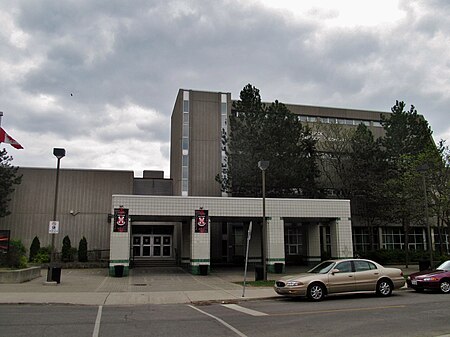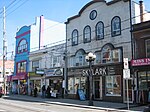St. Patrick Catholic Secondary School

The Centre for Arts, Media, and Technology at St. Patrick Catholic Secondary School (also referred as SPCSS, St. Pats, St. Patrick, St. Patrick C.S.S. or Pats) is a Roman Catholic high school located in Toronto, Ontario, Canada as part of the Toronto Catholic District School Board. It is dedicated to Saint Patrick of Ireland and St. Marguerite Bourgeoys, the founder of the Congregation of Notre Dame. One of Toronto's oldest schools, St. Patrick's used to be an elementary school founded in 1852 until 1983 and turned into a secondary school which opened in 1986 on D'Arcy Street (now the Toronto District School Board's Heydon Park Secondary School). Since September 1989, St. Patrick had been moved from downtown Toronto into the former Lakeview Secondary School (also owned by the TDSB) in Toronto's east end. The motto for St. Patrick is "Amor Christi nos impellit" which translates to English as "The Love of Christ Impels Us".
Excerpt from the Wikipedia article St. Patrick Catholic Secondary School (License: CC BY-SA 3.0, Authors, Images).St. Patrick Catholic Secondary School
Felstead Avenue, Toronto
Geographical coordinates (GPS) Address Phone number Website External links Nearby Places Show on map
Geographical coordinates (GPS)
| Latitude | Longitude |
|---|---|
| N 43.678151 ° | E -79.328343 ° |
Address
St. Patrick Catholic Secondary School
Felstead Avenue 49
M4J 1G3 Toronto
Ontario, Canada
Open on Google Maps









